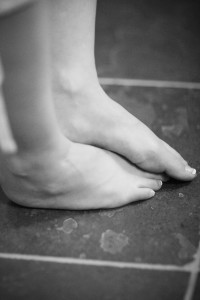 There has been a ton of research done over the past few years on the benefits of running barefoot. Some studies have shown that running in shoes somehow weakens the small muscles of the feet as well as the tendons, ligaments, and natural arches of the feet. Several experts agree that running barefoot can improve your feet’s biomechanics and prevent the risk of injury.
There has been a ton of research done over the past few years on the benefits of running barefoot. Some studies have shown that running in shoes somehow weakens the small muscles of the feet as well as the tendons, ligaments, and natural arches of the feet. Several experts agree that running barefoot can improve your feet’s biomechanics and prevent the risk of injury.
If you do decide to run barefoot, start with short runs and slowly progress to longer runs over time. This will help strengthen the supporting muscles, tendons, and ligaments as well as prevent overuse injuries. I recommend starting with a 10 – 15 minute walk for the first couple exercise sessions then progressing to longer runs, which will allow your feet to adapt to the current workload. Good luck!
Best Surfaces For Barefoot Running:
- Sand – Great for improving foot support, but the risk of a rolled ankle is extremely high.
- Grass – Softens the impact of the knees, ankles, and feet, but be aware of uneven surfaces (golf course grass is best).
- Dirt – Softens the impact of the knees, ankles, and feet and forms the shape of the foot during impact. Be cautious of rocky terrain.
- Artificial Track or Surface – Softens the impact of the knees, ankles, and feet. One of the safest terrains due to the fact of even surfaces and lack of sharp objects that could lead to serious injury.
Barefoot Running Safety:
- Map out your routine and plan accordingly
- Avoid city streets or sidewalks and potential trash, glass, other hazardous objects
- Avoid running at night, which makes it hard to see uneven terrain
- Pay close attention to the placement of each step
- Hydrate before, during, and after your run to prevent cramping or injury
- Listen to your body and don’t overdo the run (feet are extremely sensitive)

